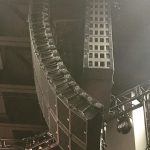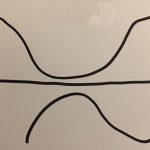
QuickTip: Low Levels for Good Balances

Here’s a quick mixing tip that can be helpful for virtual soundcheck and streaming/broadcast mixing scenarios.
When you want to get a good idea of what your balance is really like, listen at a very low level.
First off, why does this work?
Low level listening is like a zoom lens for your relative balances. When you get your listening level closer to your threshold of hearing, the loudest things in your mix will be at the forefront, and you can more clearly hear how far off the rest of your mix is from the louder things. This is also a great way to hear how dynamic things are.
Listening at a low level also shifts our perception a bit. At lower listening levels our perception of lower frequencies and higher frequencies falls off making the mid-range more apparent. The mid-range is the meat of our mix, and when you start thinking about translation for streaming it becomes one of the most important ranges since mid-range is common on all playback systems from your TV to your laptop to your hi-fi stereo to your phone.
So, how low is “low”?
This is a tough question because I find loudness perception is governed by multiple factors. SPL is the obvious one, but the size of the room, acoustic conditions, and distance from the speakers can influence things as well. So if you’re starting out with this, I would try a couple of different things.
First up would be a level just below conversation level. You want it low enough that if people are talking around you at a reasonable level, they would drown out the mix or at least make it very difficult to do your job. A second level to try would be as low as you can stand so that you can still hear what’s happening. A third option would be to start about 20 dB down from show level, and then drop the level in 10 dB increments to check things.
Personally, when I’m working in my studio I do most of my low level mixing on my Auratones which are small, single driver speakers in my nearfield. According to the SPL meter I have in my studio and some apps in my smartphone, my “low level” in my treated studio on small speakers is about 65 dBA and sometimes I go down to 55 dBA. The 55 level is fine for checking things, but for most of what I do I’m in the 65 dBA range.
When you’re listening quiet, you should use caution when using EQ, though. I find I can EQ instruments in context to help them fit together better at low levels. However, because of the perception shift that takes place thanks to Equal Loudness, I don’t think it’s a good idea to try and EQ things in solo since our hearing perception isn’t flat at low levels.

 Previous Post
Previous Post Next Post
Next Post


